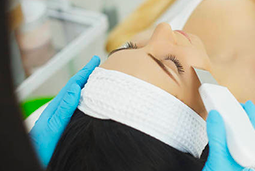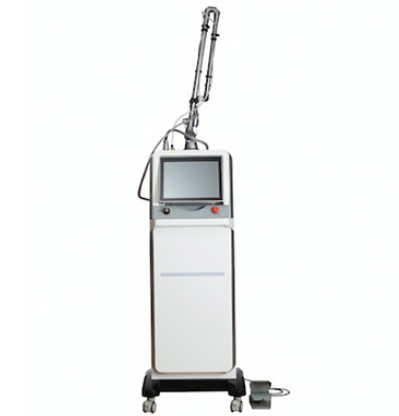Carbon dioxide fractional resurfacing is a new modality for a laser treatment that creates numerous microscopic thermal injury zones with controlled width, depth, and density, if implemented with proper laser delivery systems, enabling high energy treatments while minimizing risks.
• What is a carbon dioxide laser fractional resurfacing?
Carbon dioxide laser resurfacing is used to treat a variety of skin conditions. Carbon dioxide lasers very precisely remove thin layers of skin with minimal heat damage to the surrounding structures.
• Carbon dioxide lasers fractional treat:
- Wrinkles (rhytides).
- Photodamage.
- Scars.
- Warts.
- Linear epidermal nevi (birthmarks).
- Rhinophyma (enlarged oil glands on the nose).
- The lasers have been in use for many years to treat non-cancerous (benign) and cancerous (malignant) skin conditions. A new generation of carbon dioxide lasers uses very short-pulsed light energy (ultra pulsed) or continuous light beams that are delivered in a scanning pattern.
• How does it work?
Carbon dioxide laser fractional resurfacing is usually performed on an outpatient basis, using local anesthesia in combination with sedative medications given by mouth or through a vein.
The areas to be treated are numbed with a local anesthetic. General anesthesia may be used when the entire face is treated. Wrinkles around the eyes, mouth, or forehead may be treated individually, or a full-face laser resurfacing may be performed.
A partial-face laser fractional resurfacing takes 30 to 45 minutes, and the full-face treatment takes one-and-a-half to two hours.
Following the CO2 laser fractional resurfacing procedure, a non-stick dressing is applied to the treatment sites for 24 hours. You may be instructed to clean the treated areas two to five times a day with saline or a dilute vinegar solution. You can then apply Vaseline to the area. This wound care is intended to prevent the forming of any scabs, which can increase the chance of scarring and prolong the healing time.
• What are the possible risks and side effects of carbon dioxide laser fractional resurfacing?
Milia, which are small white bumps or cysts, may appear in the laser-treated areas during healing. These may be removed by gentle cleansing with a washcloth or by a dermatologist in the office by nicking the surface with a blade and expressing the cyst material out of the skin.
Acne flares may occur after laser fractional resurfacing. This may resolve on its own or can be treated with conventional acne therapies.
Hyperpigmentation, and more rarely, hypopigmentation, may result in the laser-treated areas. In general, the hyperpigmented areas may be treated with bleaching cream to ease fading of the pigment. Hypopigmentation is more difficult to treat.
Reactivation of a herpes simplex cold sore may occur, especially after laser resurfacing around the mouth. This can be prevented by giving an antiviral medication prior to the surgery and continuing it for seven to 10 days post-procedure.
• How long does it take to recover?
In general, the areas heal in 10 to 21 days, depending on the nature of the condition that was treated and the intensity of the laser settings. The stronger the settings, the longer the recovery time.
You should avoid sun exposure for four weeks before laser fractional treatment and liberally apply sunscreens pre-and post-procedure.
We are a Vertical Fractional CO2 Laser Machine supplier,please contact us if you need them.










